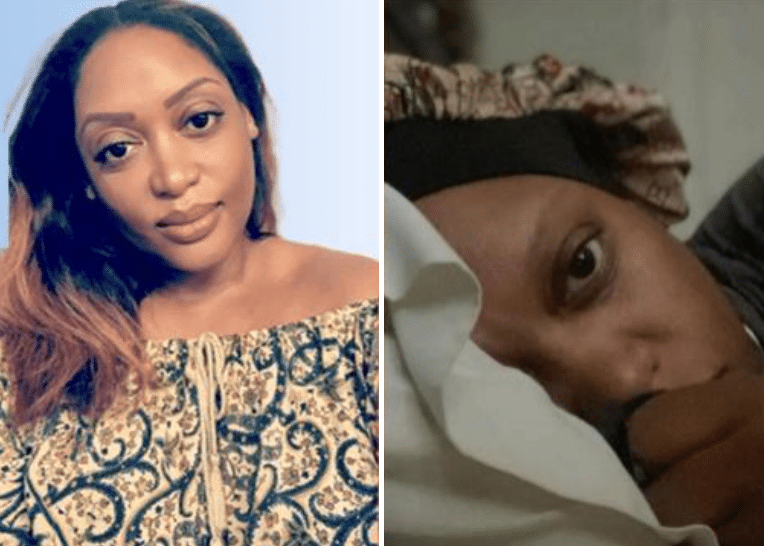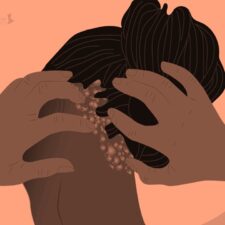
For Jaime Sanders, living with Chronic Migraine has been a lifelong journey—one that has shaped her into a powerful advocate and voice for the migraine community. Her story is not just one of personal struggle, but of resilience, growth, and a commitment to helping others.
Sanders, also known as the “Migraine Diva,” began experiencing migraine attacks at a young age, facing stigma and lack of understanding from those around her. She sat down with The Head Start: Embracing the Journey podcast to speak her truth. As she describes, “I was always affected by the environment around me,” Sanders says in the episode.¹ “So with the harsh lighting, the horrible fluorescent lighting of, like, the 1980s, it was terrible.” These early experiences set the stage for a challenging path ahead.
Dealing with migraine as a child
The impact of dealing with Chronic Migraine as a child and young adult took its toll. Sanders recalls, “What that taught me was to just kind of hold all of that in and push through, which a lot of people with chronic illness do. It’s just, let me just push through this until I can’t anymore, where I can finally kinda just give into it.” This pattern of pushing through headache pain and hiding her struggles became a survival mechanism, but one that would eventually lead to burnout.
However, Sanders’ perspective began to shift as an adult. She learned to separate her identity from the disease, affirming “I am not my disease.” This powerful realization allowed her to view her condition in a new light and approach her life with renewed purpose.
Parenting with Chronic Migraine
She also found joy in small moments with her family, explaining, “Taking joy, finding joy in the fact that, yes, I can’t go to the movie theater, but when my kids were little, we can have a bed picnic and rent a movie and just sit on our king-size bed and enjoy time together.” These moments of connection became crucial in Sanders’ journey of self-acceptance and resilience.
Sanders’ experience with Chronic Migraine has also shaped her approach to parenting. She shares, “I was always very transparent with them about my experiences because I didn’t show up like everybody else’s mom.” This openness has had a profound impact on her children, as she notes proudly, “My children are capable adults and are able to sense, you know, when somebody’s going through something and hold compassion for them.”
Becoming “The Migraine Diva”
In 2011, Sanders took a significant step in her journey by starting a blog. As she describes, “I wanted a platform where I can speak openly and honestly about my experience, and maybe some people will follow my journey.” This decision was driven by a desire for connection and community, as Sanders explains, “Even though migraine disease runs in my family, I’m the only one diagnosed with Chronic Migraine, so it’s still a very isolating and lonely place to sit in.”
What began as a personal outlet evolved into a calling for advocacy work direly needed in her community. Black American patients are 25 percent less likely to be diagnosed with migraine compared to White patients.² “It’s given my struggle a purpose, and that’s really important to me,” Sanders shares. Her blog became a starting point for broader advocacy efforts, allowing her to connect with others who shared similar experiences and to raise awareness about the realities of living with Chronic Migraine.
Sanders’ advocacy work is particularly significant given the disparities in Chronic Migraine care for marginalized communities. As a woman of color, she recognizes the importance of representation in the migraine community. “As a Black woman, we don’t really talk about our experiences on that level,” she notes, highlighting the need for diverse voices in discussions about chronic health conditions.
Today, Sanders continues to be a prominent voice in the migraine community, working to build trust, education and support for those living with the disease. She pushes other patients like her to never settle for subpar care and to consider all of their options. Chronic Migraine patients may consider reaching out to a headache specialist for tailored treatment.
Her journey demonstrates the power of finding purpose through adversity and using one’s experiences to help others. As Sanders puts it, Chronic Migraine may be part of her story, but it does not define her: “I am not my disease.”
Through her advocacy, writing, and personal example, Sanders continues to inspire others living with Chronic Migraine. She emphasizes the importance of self-compassion, community support, and speaking openly about one’s experiences. Her story serves as a powerful reminder that even in the face of chronic illness, it’s possible to find meaning, purpose, and moments of joy.
If you think you are suffering from Chronic Migraine, please speak to a Neurologist or Headache Specialist today.
This article is sponsored by AbbVie. Jaime Sanders was on an AbbVie therapy when she shared her story. Sanders was not compensated by AbbVie for sharing her story.
References
- The Head Start: Embracing the Journey Podcast. (2023). Interview with Jaime Sanders: Living with Chronic Migraine.
- Kiarashi, Jessica et al. (2020). “Factors Associated With, and Mitigation Strategies for, Health Care Disparities Faced by Patients With Headache Disorders.”
US-BCM-250080 06/25








